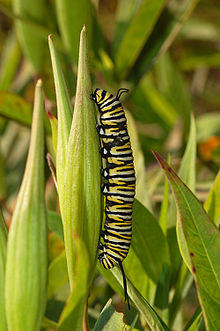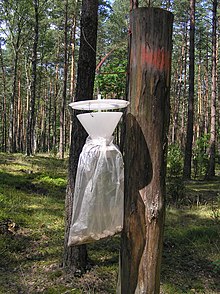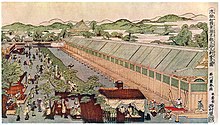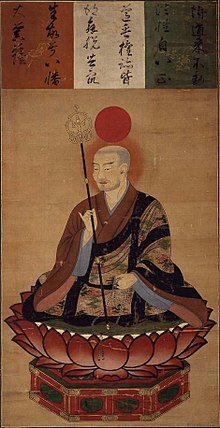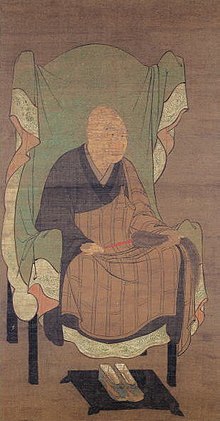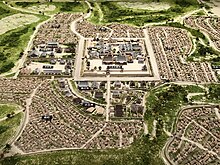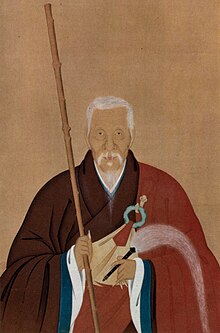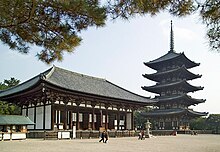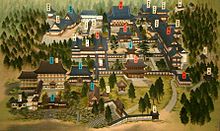From Wikipedia, the free encyclopedia
Buddhism has been practiced in Japan since about the 6th century CE. Japanese Buddhism (Nihon Bukkyō) created many new Buddhist schools, and some schools are original to Japan and some are derived from Chinese Buddhist schools. Japanese Buddhism has had a major influence on Japanese society and culture and remains an influential aspect to this day.
According to the Japanese Government's Agency for Cultural Affairs estimate, as of 2018, with about 84 million or about 67% of the Japanese population, Buddhism was the religion in Japan with the second most adherents, next to Shinto, though a large number of people practice elements of both. According to the statistics by the Agency for Cultural Affairs in 2021, the religious corporation under the jurisdiction of the Ministry of Education, Culture, Sports, Science and Technology
in Japan had 135 million believers, of which 47 million were Buddhists
and most of them were believers of new schools of Buddhism which were
established in the Kamakura period (1185-1333). According to these statistics, the largest sects of Japanese Buddhism are the Jōdo Buddhists with 22 million believers, followed by the Nichiren Buddhists with 11 million believers. There are a wide range of estimates, however; the Pew Research Center estimated 36.2% of the population in 2010 practiced Buddhism.
The Japanese General Social Survey places the figure at less than 20%
of the population in 2017, and along with the 2013 Japanese National
Character Survey, shows that roughly 70% of the population do not adhere
to any religious beliefs. Another survey indicates that about 60% of the Japanese have a Butsudan (Buddhist shrine) in their homes. According to a Pew Research study from 2012, Japan has the third largest Buddhist population in the world, after China and Thailand.
History
Arrival and initial spread of Buddhism
Buddhism arrived in Japan by first making its way to China and Korea through the Silk Road and then traveling by sea to the Japanese archipelago. As such, early Japanese Buddhism is strongly influenced by Chinese Buddhism and Korean Buddhism.
Though the "official" introduction of Buddhism to the country occurred
at some point in the middle of the sixth century, there were likely
earlier contacts and attempts to introduce the religion. Immigrants from
the Korean Peninsula, as well as merchants and sailors who frequented
the mainland, likely brought Buddhism with them independent of the
transmission as recorded in court chronicles. Some Japanese sources mention this explicitly. For example, the Heian Period Fusō ryakki (Abridged Annals of Japan), mentions a foreigner known in Japanese as Shiba no Tatsuto, who may have been Chinese-born, Baekje-born,
or a descendent of an immigrant group in Japan. He is said to have
built a thatched hut in Yamato and enshrined an object of worship there.
Immigrants like this may have been a source for the Soga clan's later
sponsorship of Buddhism.
The Great Buddha of Asuka-dera, the oldest Buddha statue in Japan, and an example of the Tori style.
The Nihon Shoki (Chronicles of Japan) provides a date of 552 for when King Seong of Baekje (now western South Korea) sent a mission to Emperor Kinmei that included an image of the Buddha Shakyamuni, ritual banners, and sutras. This event is usually considered the official introduction of Buddhism to Japan.
Other sources, however, give the date of 538 and both dates are thought
to be unreliable. However, it can still be said that in the middle of
the sixth century, Buddhism was introduced through official diplomatic
channels.
According to the Nihon Shoki, after receiving the Buddhist
gifts, the Japanese emperor asked his officials if the Buddha should be
worshipped in Japan. They were divided on the issue, with Soga no Iname (506–570) supporting the idea while Mononobe no Okoshi and Nakatomi no Kamako worried that the kami of Japan would become angry at this worship of a foreign deity. The Nihon Shoki then states that the emperor allowed only the Soga clan to worship the Buddha, to test it out.
Thus, the powerful Soga clan played a key role in the early spread of Buddhism in the country. Their support, along with that of immigrant groups like the Hata clan, gave Buddhism its initial impulse in Japan along with its first temple (Hōkō-ji, also known as Asukadera).
The Nakatomi and Mononobe, however, continued to oppose the Soga,
blaming their worship for disease and disorder. These opponents of
Buddhism are even said to have thrown the image of the Buddha into the
Naniwa canal. Eventually outright war erupted. The Soga side, led by Soga no Umako and a young Prince Shōtoku, emerged victorious and promoted Buddhism on the archipelago with support of the broader court.
Painting depicting the semi-legendary
Prince Shōtoku (574-622), the first major sponsor of Buddhism in Japan.
Colors on silk, 14th century or earlier.
Based on traditional sources, Shōtoku has been seen as an ardent
Buddhist who taught, wrote on, and promoted Buddhism widely, especially
during the reign of Empress Suiko (554 – 15 April 628). He is also believed to have sent envoys to China and is even seen as a spiritually accomplished bodhisattva
who is the true founder of Japanese Buddhism. Modern historians have
questioned much of this, seeing most of it as a constructed hagiography.
Regardless of his actual historical role, however, it is beyond doubt
that Shōtoku became an important figure in Japanese Buddhist lore
beginning soon after his death if not earlier.
Asuka Buddhism (552–645)
The Yumedono Kannon, another example of the Tori style.
Asuka-period Buddhism (Asuka bukkyō) refers to Buddhist practice and thought that mainly developed after 552 in the Nara Basin region.
Buddhism grew here through the support and efforts of two main groups:
immigrant kinship groups like the Hata clan (who were experts in Chinese
technology as well as intellectual and material culture), and through
aristocratic clans like the Soga.
Immigrant groups like the Korean monks who supposedly instructed
Shōtoku introduced Buddhist learning, administration, ritual practice
and the skills to build Buddhist art and architecture. They included
individuals like Ekan (dates unknown), a Koguryŏ priest of the Madhyamaka school, who (according to the Nihon Shoki) was appointed to the highest rank of primary monastic prelate (sōjō).
Aside from the Buddhist immigrant groups, Asuka Buddhism was
mainly the purview of aristocratic groups like the Soga clan and other
related clans, who patronized clan temples as a way to express their
power and influence. These temples mainly focused on the performance of
rituals which were believed to provide magical effects, such as
protection. During this period, Buddhist art was dominated by the style of Tori Busshi, who came from a Korean immigrant family.
Hakuhō Buddhism (645–710)
Hakuhō Buddhism (Hakuhō refers to Emperor Tenmu)
saw the official patronage of Buddhism being taken up by the Japanese
imperial family, who replaced the Soga clan as the main patrons of
Buddhism. Japanese Buddhism at this time was also influenced by Tang
dynasty (618–907) Buddhism. It was also during this time that Buddhism began to spread from the Yamato Province to the other regions and islands of Japan. An important part of the centralizing reforms of this era (the Taika reforms) was the use of Buddhist institutions and rituals (often performed at the palace or capital) in the service of the state.
The imperial government also actively built and managed the Buddhist temples as well as the monastic community. The Nihon Shoki states that in 624 there were 46 Buddhist temples. Some of these temples include Kawaradera and Yakushiji. Archeological research has also revealed numerous local and regional temples outside of the capital.
At the state temples, Buddhist rituals were performed in order to
create merit for the royal family and the well being of the nation.
Particular attention was paid to rituals centered around Buddhist sutras
(scriptures), such as the Golden Light Sutra. The monastic community was overseen by the complex and hierarchical imperial Monastic Office (sōgō), who managed everything from the monastic code to the color of the robes.
Nara Buddhism (710–794)
A model of Yakushi-ji, a major imperial temple of Nara
Model of the
garan of Todaiji seen from the north side
In 710, Empress Genme moved the state capital to Heijōkyō, (modern Nara) thus inaugurating the Nara period. This period saw the establishment of the kokubunji system, which was a way to manage provincial temples through a network of national temples in each province. The head temple of the entire system was Tōdaiji.
Nara state sponsorship saw the development of the six great Nara schools, called Nanto Rokushū (南都六宗, lit. the Six Sects of the Southern Capital),
all were continuations of Chinese Buddhist schools. The temples of
these schools became important places for the study of Buddhist
doctrine. The six Nara schools were: Ritsu (Vinaya), Jōjitsu (Tattvasiddhi), Kusha-shū (Abhidharmakosha), Sanronshū (East Asian Mādhyamaka), Hossō (East Asian Yogācāra) and Kegon (Huayan).
These schools were centered around the capital where great temples such as the Asuka-dera and Tōdai-ji were erected. The most influential of the temples are known as the "seven great temples of the southern capital" (Nanto Shichi Daiji).
The temples were not exclusive and sectarian organizations. Instead,
temples were apt to have scholars versed in several of schools of
thought. It has been suggested that they can best be thought of as
"study groups".
State temples continued the practice of conducting numerous
rituals for the good of the nation and the imperial family. Rituals
centered on scriptures like the Golden Light and the Lotus Sūtra.
Another key function of the state temples was the transcription of
Buddhist scriptures, which was seen as generating much merit.
Buddhist monastics were firmly controlled by the state's monastic
office through an extensive monastic code of law, and monastic ranks
were matched to the ranks of government officials. It was also during this era that the Nihon Shoki
was written, a text which shows significant Buddhist influence. The
monk Dōji (?–744) may have been involved in its compilation.
The elite state sponsored Nara Buddhism was not the only type of
Buddhism at this time. There were also groups of unofficial monastics or
priests (or, self-ordained; shido sōni) who were either not
formally ordained and trained through the state channels, or who chose
to preach and practice outside of the system. These "unofficial" monks
were often subject to state punishment.
Their practice could have also included Daoist and indigenous kami
worship elements. Some of these figures became immensely popular and
were a source of criticism for the sophisticated, academic and
bureaucratic Buddhism of the capital.
Early Heian Period Buddhism (794–950)
An illustration of Saichō with tea leaves. He is known for having introduced tea to Japan.
During the Heian period, the capital was shifted to Kyoto (then known as Heiankyō) by emperor Kanmu,
mainly for economic and strategic reasons. As before, Buddhist
institutions continued to play a key role in the state, with Kanmu being
a strong supporter of the new Tendai school of Saichō (767–822) in particular. Saichō, who had studied the Tiantai school in China, established the influential temple complex of Enryakuji at Mount Hiei, and developed a new system of monastic regulations based on the bodhisattva precepts. This new system allowed Tendai to free itself from direct state control.
Also during this period, the Shingon ( Ch. Zhenyan; "True Word", from Sanskrit: "Mantra") school was established in the country under the leadership of Kūkai. This school also received state sponsorship and introduced esoteric Vajrayana (also referred to as mikkyō, "secret teaching") elements.
The new Buddhist lineages of Shingon and Tendai also developed
somewhat independently from state control, partly because the old system
was becoming less important to Heian aristocrats.
This period also saw an increase in the official separation between the
different schools, due to a new system that specified the particular
school which an imperial priest (nenbundosha) belonged to.
Later Heian Period Buddhism (950–1185)
Statue of Kūya by
Kōshō, son of
Unkei, dating to the first decade of the thirteenth century. The six syllables of the nembutsu,
na-mu-a-mi-da-butsu, are represented literally by six small Amida figures streaming from Kūya's mouth.
During this period, there was a consolidation of a series of annual court ceremonies (nenjū gyōji). Tendai Buddhism was particularly influential, and the veneration of the Lotus Sūtra
grew in popularity, even among the low class and non-aristocratic
population, which often formed religious groups such as the "Lotus holy
ones" (hokke hijiri or jikyōja) and mountain ascetics (shugenja).
Furthermore, during this era, new Buddhist traditions began to
develop. While some of these have been grouped into what is referred to
as "new Kamakura" Buddhism, their beginning can actually be traced to
the late Heian. This includes the practice of Japanese Pure Land Buddhism, which focuses on the contemplation and chanting of the nenbutsu, the name of the Buddha Amida (Skt. Amitābha), in hopes of being reborn in the Buddha field of Sukhāvatī. This practice was initially popular in Tendai monasteries but then spread throughout Japan.
Texts which discussed miracles associated with the Buddhas and
bodhisattvas became popular in this period, along with texts which
outlined death bed rites.
During this period, some Buddhist temples established groups of warrior-monks called Sōhei. This phenomenon began in Tendai temples, as they vied for political influence with each other. The Genpei war saw various groups of warrior monks join the fray.
There were also semi-independent clerics (who were called shōnin
or hijiri, "holy ones") who lived away from the major Buddhist
monasteries and preached to the people. These figures had much more
contact with the general populace than other monks. The most well known of these figures was Kūya (alt. Kōya; 903–972), who wandered throughout the provinces engaging in good works (sazen), preaching on nembutsu practice and working with local Buddhist cooperatives (zenchishiki) to create images of bodhisattvas like Kannon.
A scroll depicting the kami Hachiman dressed as a Buddhist monk, an example of
Shinbutsu-shūgō ("syncretism of kami and buddhas").
Another important development during this era was that Buddhist monks
were now being widely encouraged by the state to pray for the salvation
of Japanese kami
(divine beings in Shinto). The merging of Shinto deities with Buddhist
practice was not new at this time. Already in the eighth century, some
major Shinto shrines (jingūji) included Buddhist monks which conducted rites for shinto divinities. One of the earliest such figures was "great Bodhisattva Hachiman" (Hachiman daibosatsu) who was popular in Kyūshū.
Popular sites for pilgrimage and religious practice, like Kumano,
included both kami worship and the worship of Buddhas and bodhisattvas,
which were often associated with each other. Furthermore, temples like
Tōdaiji also included shrines for the worship of kami (in Tōdaiji's
case, it was the kami Shukongōjin that was enshrined in its rear
entryway).
Buddhist monks interpreted their relationship to the kami in
different ways. Some monks saw them as just worldly beings who could be
prayed for. Other saw them as manifestations of Buddhas and
bodhisattvas. For example, the Mt. Hiei monk Eryō saw the kami as
"traces" (suijaku) of the Buddha. This idea, called essence-trace (honji-suijaku), would have a strong influence throughout the medieval era.
Sutra art from the Heike-Nôkyô, chapter 12.
The copying and writing of Buddhist scripture was a widespread practice in this period. It was seen as producing merit
(good karma). Artistic portraits depicting events from the scriptures
were also quite popular during this era. They were used to generate
merit as well as to preach and teach the doctrine. The "Enshrined Sutra
of the Taira Family" (Heikenōkyō),
is one of the greatest examples of Buddhist visual art from this
period. It is an elaborately illustrated Lotus Sūtra installed at Itsukushima Shrine.
The Buddhist liturgy of this era also became more elaborate and performative. Rites such as the Repentance Assembly (keka'e) at Hōjōji developed to include elaborate music, dance and other forms of performance. Major temples and monasteries such as the royal Hosshōji temple and Kōfukuji, also became home to the performance of Sarugaku theater (which is the origin of Nō Drama)
as well as ennen ("longevity-enhancing") arts which included dances and
music. Doctrinally, these performative arts were seen as skillful means (hōben, Skt. upaya) of teaching Buddhism. Monks specializing in such arts were called yūsō ("artistic monks").
Another way of communicating the Buddhist message was through the medium of poetry, which included both Chinese poetry (kanshi) and Japanese poetry (waka). An example of Buddhist themed waka is Princess Senshi's (964–1035) Hosshin waka shū
(Collection of Waka of the Awakening Mind, 1012). The courtly practice
of rōei (performing poetry to music) was also taken up in the Tendai and
Shingon lineages. Both monks and laypersons met in poetry circles (kadan) like the Ninnaji circle which was patronized by Prince Shukaku (1150–1202).
Early and Middle Kamakura Buddhism (1185–1300)
The Kamakura period was a period of crisis in which the control of the country moved from the imperial aristocracy to the samurai. In 1185 the Kamakura shogunate was established at Kamakura.
An illustration of Hōnen preaching
This period saw the development of new Buddhist lineages or schools
which have been called "Kamakura Buddhism" and "New Buddhism". All of
the major founders of these new lineages were ex-Tendai monks who had
trained at Mt. Hiei and had studied the exoteric and esoteric systems of
Tendai Buddhism. During the Kamakura period, these new schools did not
gain as much prominence as the older lineages, with the possible
exception of the highly influential Rinzai Zen school.
The new schools include Pure Land lineages like Hōnen's (1133–1212) Jōdo shū and Shinran's (1173–1263) Jōdo Shinshū,
both of which focused on the practice of chanting the name of Amida
Buddha. These new Pure Land schools both believed that Japan had entered
the era of the decline of the Dharma (mappō)
and that therefore other Buddhist practices were not useful. The only
means to liberation was now the faithful chanting of the nembutsu. This view was critiqued by more traditional figures such as Myō'e (1173–1232).
Another response to the social instability of the period was an
attempt by certain monks to return to the proper practice of Buddhist
precepts as well as meditation. These figures include figures like the
Kōfukuji monk Jōkei
(1155–1213) and the Tendai monk Shunjō (1166–1227), who sought to
return to the traditional foundations of the Buddhist path, ethical
cultivation and meditation practice.
Other monks attempted to minister to marginalized low class
groups. The Kegon-Shingon monk Myō'e was known for opening his temple to
lepers, beggars, and other marginal people, while precept masters such
as Eison (1201–1290) and Ninshō
(1217–1303) were also active in ministering and caring for ill and
marginalized persons, particularly those outcast groups termed
"non-persons" (hinin). Deal & Ruppert (2015) p. 122 Ninshō established a medical facility at Gokurakuji in 1287, which treated more than 88,000 people over a 34-year-period and collected Chinese medical knowledge.
Another set of new Kamakura schools include the two major Zen schools of Japan (Rinzai and Sōtō), promulgated by monks such as Eisai and Dōgen,
which emphasize liberation through the insight of meditation (zazen).
Dōgen (1200–1253) began a prominent meditation teacher and abbot. He
introduced the Chan lineage of Caodong, which would grow into the Sōtō school. He criticized ideas like the final age of the Dharma (mappō), and the practice of apotropaic prayer.
A 20th century depiction of the banishment of Nichiren in 1261.
Additionally, it was during this period that monk Nichiren (1222–1282) began teaching his exclusively Lotus Sutra
based Buddhism, which he saw as the only valid object of devotion in
the age of mappō. Nichiren believed that the conflicts and disasters of
this period were caused by the wrong views of Japanese Buddhists (such
as the followers of Pure Land and esoteric Buddhism). Nichiren faced much opposition for his views and was also attacked and exiled twice by the Kamakura state.
Late Medieval Buddhism (1300-1467)
During
this period, the new "Kamakura schools" continued to develop and began
to consolidate themselves as unique and separate traditions. However, as
Deal and Ruppert note, "most of them remained at the periphery of
Buddhist institutional power and, in some ways, discourse during this
era."
They further add that it was only "from the late fifteenth century
onward that these lineages came to increasingly occupy the center of
Japanese Buddhist belief and practice." The only exception is Rinzai Zen, which attained prominence earlier (13th century). Meanwhile, the "old" schools and lineages continued to develop in their own ways and remained influential.
The new schools' independence from the old schools did not happen
all at once. In fact, the new schools remained under the old schools'
doctrinal and political influence for some time. For example, Ōhashi
Toshio has stressed how during this period, the Jōdo sect was mainly
seen as a subsidiary or temporary branch sect of Tendai. Furthermore,
not all monks of the old sects were antagonistic to the new sects.
During the height of the medieval era, political power was
decentralized and shrine-temple complexes were often competing with each
other for influence and power. These complexes often controlled land
and multiple manors, and also maintained military forces of warrior
monks which they used to battle with each other. In spite of the instability of this era, the culture of Buddhist study and learning continued to thrive and grow.
Furthermore, though there were numerous independent Buddhist
schools and lineages at this time, many monks did not exclusively belong
to one lineage and instead traveled to study and learn in various
temples and seminaries. This tendency of practicing in multiple schools
or lineages was termed shoshū kengaku. It became much more prominent in the medieval era due to the increased social mobility that many monks enjoyed.
The main gate of Tōfuku-ji, the oldest
sanmon in Japan.
Both the Kamakura shogunate (1192–1333) and the Ashikaga shogunate (1336–1573) supported and patronized the "Five Mountains culture" (Gozan Jissetsu Seido) of Rinzai
Zen. This Rinzai Zen tradition was centered on the ten "Five Mountain"
temples (five in Kyoto and five in Kamakura). Besides teaching zazen
meditation, they also pursued studies in esoteric Buddhism and in
certain art forms like calligraphy and poetry. A pivotal early figure of
Rinzai was Enni Ben'en
(1202–1280), a high-ranking and influential monk who was initiated into
Tendai and Shingon. He then traveled to China to study Zen and later
founded Tōfukuji.
The Tendai and Shingon credentials of Rinzai figures such as Enni
show that early Zen was not a lineage that was totally separate from
the other "old" schools.
Indeed, Zen monastic codes feature procedures for "worship of the
Buddha, funerals, memorial rites for ancestral spirits, the feeding of
hungry ghosts, feasts sponsored by donors, and tea services that served
to highlight the bureaucratic and social hierarchy."
Medieval Rinzai was also invigorated by a series of Chinese masters who came to Japan during the Song dynasty, such as Issan Ichinei (1247–1317). Issan influenced the Japanese interest in Chinese literature, calligraphy and painting. The Japanese literature of the Five Mountains (Gozan Bungaku) reflects this influence. One of his students was Musō Soseki, a Zen master, calligraphist, poet and garden designer who was granted the title "national Zen teacher" by Emperor Go-Daigo. The Zen monk poets Sesson Yūbai and Kokan Shiren also studied under Issan. Shiren was also a historian who wrote the Buddhist history Genkō shakusho.
The Royal court and elite families of the capital also studied
the classic Chinese arts that were being taught in the five mountain
Rinzai temples. The shogunal families even built Zen temples in their
residential palaces. The five mountain temples also established their
own printing program (Gozan-ban) to copy and disseminate a wide variety of literature that included records of Zen masters, the writings of Tang poets, Confucian classics, Chinese dictionaries, reference works, and medical texts.
The Hansōbō shrine, a Shinto shrine at the Rinzai temple of
Kenchō-ji.
It is also during this period that true lineages of "Shintō" kami
worship begin to develop in Buddhist temples complexes, lineages which
would become the basis for institutionalized Shintō of later periods.
Buddhists continued to develop theories about the relationship between
kami and the Buddhas and bodhisattvas. One such idea, gongen ("provisional manifestation"), promoted the worship of kami as manifest forms of the Buddhas. A group of Tendai monks at Mt. Hiei meanwhile incorporated hongaku thought into their worship of the kami Sannō, which eventually came to be seen as the source or "original ground" (honji) of all Buddhas (thereby reversing the old honji suijaku theory which saw the Buddha as the honji). This idea can be found in the work of the Hiei monk Sonshun (1451–1514).
Late Muromachi-Period Buddhism (1467–1600)
Kinkaku-ji, ("the Temple of the Golden Pavilion'), is a Rinzai Zen temple built in the
Muromachi period (c. 1397) and destroyed during the Onin War (it was later rebuilt).
Beginning with the devastating Ōnin War (1467–1477), the Muromachi period (1336–1573) saw the devolution of central government control and the rise of regional samurai warlords called daimyōs and the so called "warring states era" (Sengokuki).
During this era of widespread warfare, many Buddhist temples and
monasteries were destroyed, particularly in and around Kyoto. Many of
these old temples would not be rebuilt until the 16th and 17th
centuries.
During this period, the new Kamakura schools rose to a new level
of prominence and influence. They also underwent reforms in study and
practice which would make them more independent and would last
centuries. For example, it was during this period that the True Pure
Land monk Rennyo (1415–1499) forged a large following for his school and rebuilt Honganji. He reformed devotional practices with a focus on Shinran and honzon scrolls inscribed with the nembutsu. He also made widespread use of the Japanese vernacular.
The Zen lineages were also widely disseminated throughout the
country during this era. A key contributing factor to their spread (as
well as to the spread of Pure Land temples) was their activity in
funerals and mortuary rituals. Some temple halls were reconstructed with
a focus on mortuary rites (sometimes for a specific family, like the Tokugawa) and were thus known as mortuary temples (bodaiji).
Furthermore, during this era, schools like Soto Zen, the Hokke
(Nichiren) schools and Rennyo's Pure land school also developed
comprehensive curricula for doctrinal study, which allowed them to
become more self sufficient and independent schools and eliminated the
need for their monks to study with other schools.
There was also a decrease in the ritual schedule of the royal
court. Because of this, Buddhist Temples which did survive this period
had to turn to new ways of fundraising. Aside from mortuary duties, this
also included increasing public viewings (kaichos) of hidden or esoteric images.
A model of
Ishiyama Hongan-ji in Osaka, one of the main fortress-temple complex of the True Pure Land (
Jōdo Shinshū) "Devoted League" (
Ikko-Ikki).
The Battle of Ishiyama Hongan-ji, by Utagawa Yoshifuji
This era also saw the rise of militant Buddhist leagues (ikki), like the Ikko Ikki
("Single Minded" Pure Land Leagues) and Hokke Ikki (Nichirenist "Lotus"
Leagues), who rose in revolt against samurai lords and established
self-rule in certain regions. These leagues would also sometimes go to
war with each other and with major temples. The Hokke Ikki managed to
destroy the Ikko Ikki's Yamashina Honganji
temple complex and take over much of Kyoto in the 1530s. They
eventually came into conflict with the Tendai warrior monks of Enryakuji
in what became known as the Tenbun Period War, in which all 21 major
Hokke (Nichiren) temples were destroyed, along with much of Kyoto.
The Tendai warrior monks and the Ikko Ikki leagues remained a major political power in Japan until their defeat at the hands of Oda Nobunaga (1534–1582), who subjugated both the Tendai monks at Mt Hiei and then the Ikko Ikki, in the Ishiyama Honganji War (1570–1580) .
During the mid-sixteenth century westerners first began to arrive
in Japan, introducing new technologies, as well as Christianity. This
led to numerous debates between Christians and Buddhists, such as the
so-called "Yamaguchi sectarian debates" (yamaguchi no shūron).
Early and Middle Edo-Period Buddhism (1600–1800)
After the Sengoku period of war, Japan was re-united by the Tokugawa Shogunate (1600–1868) who ran the country through a feudal system of regional daimyō.
The Tokugawa also banned most foreigners from entering the country. The
only traders to be allowed were the Dutch at the island of Dejima.
During the seventeenth century, the Tokugawa shōgun Iemitsu
set into motion a series of reforms which sought to increase state
control of religion (as well as to eliminate Christianity). Iemitsu's
reforms developed what has been called the head–branch system (hon-matsu seido) and the temple affiliation system (jidan; alt. danka seido).
This system made use of already existing Buddhist institutions and
affiliations, but attempted to bring them under official government
control and required all temples to be affiliated with a government
recognized lineage. In general, the Tendai, Pure Land, and Shingon sects were treated more favourably than the True Pure Land and Nichiren sects because the latter had a history of inciting socio-political disturbances in the 16th century.
Buddhist leaders often worked with the government, providing religious support for their rule. For example, the Zen monk Takuan Sōhō (1573–1645) suggested that the spirit of Tokugawa Ieyasu, was a kami (divine spirit). He also wrote a book on zen and martial arts (The Unfettered Mind) addressed to the samurai. Meanwhile, Suzuki Shōsan would even call the Tokugawa shōgun a "holy king" (shōō).
In the Edo Period, Buddhist institutions procured funding through
various ritual means, such as the sale of talismans, posthumous names
and titles, prayer petitions, and medicine. The practice of pilgrimage was also prominent in the Edo Period. Many temples and holy sites like Mt. Kōya, Mt. Konpira and Mt. Ōyama (Sagami Province) hosted Buddhist pilgrims and mountain ascetics throughout the era.
Portrait of Chinese monk Yinyuan (
Ingen), who founded the Ōbaku school
During the 17th century, the Ōbaku lineage of Zen would be introduced by Ingen, a Chinese monk. Ingen had been a member of the Linji school
in Ming China. This lineage, which promoted the dual practice of zazen
and nembutsu, would be very successful, having over a thousand temples
by the mid-18th century.
Meanwhile, a new breed of public preaches was beginning to
frequent public spaces and develop new forms of preaching. These include
Pure Land monk Sakuden (1554–1642), who is seen as an originator of Rakugo humor and wrote the Seisuishō
(Laughs to Wake You Up), which is a collection of humorous anecdotes.
Other traveling preachers of the era who made use of stories and
narratives include the Shingon-Ritsu monk Rentai (1663–1726) and the
Pure Land monk Asai Ryōi (d. 1691).
During the 18th century, Japanese Rinzai would be transformed by the work of Hakuin Ekaku
(1685–1768) and his students. Hakuin focused on reforming Rinzai kōan
training, which he interpreted as a somatic practice by drawing on ideas
from Chinese medicine and Daoism. Hakuin also criticized the mixing of
Zen and Pure Land.
Making Prints, by Hosoki Toshikazu c. 1879
During the Edo period, there was an unprecedented growth of print
publishing (in part due to the support of the Tokugawa regime), and the
creation and sale of printed Buddhist works exploded. The Tendai monk Tenkai, supported by Iemitsu, led the printing of the Buddhist "canon" (issaikyō, i.e. The Tripiṭaka).
Deal & Ruppert (2015) pp. 184–186 Also notable was the publication
of an exceptionally high quality reprint of the Ming-era Tripiṭaka by Tetsugen Doko, a renowned master of the Ōbaku school. An important part of the publishing boom were books of Buddhist sermons called kange-bon or dangi-bon.
With the support of the Shogunate, Buddhist scholasticism also
thrived during the Edo period, and the major Buddhist schools
established new systems of scholastic study in their schools' seminaries
(danrin). Examples include the 18 Jōdo school danrin in Kantō, which were patronized by the Tokugawa family, the most prominent being Zōjōji. The True Pure Land lineages established an extensive seminary system which constituted what would eventually become Ryūkoku University.
There was also a renaissance of Sanskrit studies in the Shingon school,
led by figures such as Jōgon (1639–1702) and Jiun Sonja (1718–1804).
Meanwhile, in Sōtō Zen, scholars led by Menzan Zuihō (1683–1769) undertook a major attempt to publish and study the works of Dōgen.
Also during this time there was a widespread movement among many
Buddhist sects to return to the proper use of Buddhist precepts.
Numerous figures in the Ōbaku, Shingon, Shingon-risshū, Nichiren, Jōdo
shū and Soto schools participated in this effort to tighten and reform
Buddhist ethical discipline.
Meiji period (1868-1931)
Buddhist temple bells being smelted for bronze during the haibutsu kishaku
After the Meiji Restoration in 1868, the new imperial government adopted a strong anti-Buddhist attitude. A new form of pristine Shinto, shorn of all Buddhist influences, was promoted as the state religion, an official state policy known as shinbutsu bunri (separating Buddhism from Shinto), which began with the Kami and Buddhas Separation Order (shinbutsu hanzenrei) of 1868.
The ideologes of this new Shinto sought to return to a pure Japanese
spirit, before it was "corrupted" by external influences, mainly
Buddhism. They were influenced by national study (kokugaku) figures like Motoori Norinaga (1730–1801) and Hirata Atsutane (1776–1843), both of whom strongly criticized Buddhism.
The new order dismantled the combined temple-shrine complexes that had
existed for centuries. Buddhists priests were no longer able to practice
at Shinto shrines and Buddhist artifacts were removed from Shinto
shrines.
This sparked a popular and often violent movement to eradicate
Buddhism, which was seen as backwards and foreign and associated with
the corrupt Shogunate. There had been much pent-up anger among the
populace because the Tokugawa danka system
forced families to affiliate themselves with a Buddhist temple, which
included the obligation of monetary donations. Many Buddhist temples
abused this system to make money, causing an undue burden on their
parishioners.
This religious persecution of Buddhism, known as haibutsu kishaku (literally: "abolish Buddhism and destroy Shākyamuni"),
saw the destruction and closure of many Buddhist institutions
throughout Japan as well as the confiscation of their land, the forced
laicization of Buddhist monks and the destruction of Buddhist books and
artifacts. In some instances, monks were attacked and killed.
The violence spread to every region of the country. Japanologist Martin Collcutt believes Japanese Buddhism was on the verge of total eradication.
It is estimated that 40,000 Buddhist temples were destroyed, and in
certain places the percentage of Buddhist temples destroyed reached 80%.
The intensity of the destruction depended on the region, and the most
violent times of haibutsu kishaku lasted between 1869 and 1871.
The government edict of April 1872 ended the status of the
Buddhist precepts as state law and allowed monks to marry, to eat meat
and stopped the regulation of tonsure and dress.
The result of this law (over the course of about four decades) was that
most Buddhist priests in Japan marry and many temples became hereditary
holdings within a family.
Anti-Buddhist government policies and religious persecution put
many Buddhist institutions on the defensive against those who saw it as
the enemy of the Japanese people.
This led Japanese Buddhist institutions to re-examine and re-invent the
role of Buddhism in a modernizing Japanese state which now supported state Shintō.
There were a broad range of reform strategies and movements which aimed
at positioning Buddhism as a useful partner to a modernizing Japan.
This included clerical reform to tighten discipline as well as reforms
concerning doctrine and practice. Some Buddhists sought to modernize
Buddhist thought by combining it with Western science and philosophy.
This reformed "new Buddhism" (shin bukkyō) was often
promoted by laypersons, such as Sakaino Kōyō (1871–1933) and Takashima
Beihō (1875–1949) who founded the Shin Bukkyōto Dōshikai (New Buddhist
Friends' Association) in 1899 and promoted social justice activities.
The New Buddhists often joined Japanese nationalist patriotism with
Buddhist virtues. Some new Buddhist organizations fully embraced Japanese nationalism, such as the Kokuchūkai (Pillar of the Nation Society) of Tanaka Chigaku
(1861–1939), who promoted Japanese Imperialism as a way to spread the
message of the Lotus Sutra. Another new Buddhist society was the Keii-kai
(Woof and Warp Society, founded in 1894), which was critical of
doctrinal rigidity of traditional Buddhism and championed what they
termed "free investigation" (jiyū tōkyū) as a way to respond to the
rapid changes of the time.
Kiyozawa Manshi's Seishin-shugi
(Spiritualism) movement promoted the idea that Buddhists should focus
on self-cultivation without relying on organized Buddhism or the state.
Kiyozawa and his friends lived together in a commune called Kōkōdō (Vast
Cavern), and published a journal called Seishinkai (Spiritual World).
Other Buddhists focused on adherence to the ten precepts, such as Shaku
Unshō who created formed a lay organization known as the Jūzen-kai (Association for the Ten Precepts).
An influential figure of Buddhist reform during this period was the philosopher Inoue Enryō
(1858 – 1919). A graduate of Tokyo Imperial University, he is known for
his critique of Christianity as well as for his ideas on reforming
Buddhist institutions. He sought to interpret Buddhist thought through a
more rational lens and drew on Western philosophy as well as the
teachings of the historical Buddha to do so. He was a prolific author of
around 120 books, including Shinri kinshin (The Guiding Principle of Truth) and Bukkyō katsu ron (Enlivening Buddhism). In 1904 he inaugurated the Tetsugaku-dō
(Hall of Philosophy), which was dedicated to Shakyamuni, Confucius,
Socrates, and Kant. He also advocated for social welfare activities.
It was also during the Meiji period that Japanese Buddhist
studies as an academic field began. This was sparked by the overseas
travel of Japanese scholars to Western universities and encountered
Buddhist textual studies there, particularly the study of Indian
Buddhism and its languages (Sanskrit and Pali). This led to some
Japanese Buddhists to question the orthodoxy of Japanese Buddhist
traditions.
However, the Japanese government at this time was hesitant to give
Buddhism any significant influence over public education, and as a
result Buddhist studies was classed under philosophy rather than religion, and terms such as "Indian studies" was favoured over "Buddhist studies."
One of the first such Japanese academics was Nanjō Bunyū (1849–1927), who studied Sanskrit at Oxford with Max Müller and later took a position at Tokyo Imperial University. Meanwhile, Murakami Senshō
(1851–1929) focused on the study of Sanskrit and Pali texts and the
history of Buddhism. He focused on the universal values of world
Buddhism and wrote critically regarding the historical bias of Japanese
Buddhism in works such as Daijō bussetsu ron hihan (A Critique of the Theory that Mahayana Is the Direct Teaching of the Historical Buddha, 1903).
There were also a number of new Buddhist movements that grew
popular in the Meiji period through 1945. Some of the most influential
of these were the Nichirenist/Lotus movements of Sōka Gakkai, Reiyūkai, and Risshō Kōseikai. They focused on active proselytization and wordly personal benefits.
War time Buddhism (1931–1945)
During the "fifteen year war" (beginning with the invasion of Manchuria in 1931 and ending with the surrender of Japan in '45), most Japanese Buddhist institutions supported Japan's militarization.
Japanese Buddhist support for imperialism and militarism was
rooted in the Meiji era need for Buddhists to show that they were good
citizens that were relevant to Japan's efforts to modernize and become a
major power. Some Buddhists, like Tanaka Chigaku, saw the war as a way
to spread Buddhism. During the Russo-Japanese War,
Buddhist leaders supported the war effort in different ways, such as by
providing chaplains to the army, performing rituals to secure victory
and working with the families of fallen soldiers. During the fifteen
year war, Japanese Buddhists supported the war effort in similar ways,
and Buddhist priests became attached to Imperial army regiments.
The Myōwakai (Society for Light and Peace), a transsectarian
Buddhist organization, was a strong supporter of the war effort who
promoted the idea of "benevolent forcefulness" which held that "war
conducted for a good reason is in accord with the great benevolence and
compassion of Buddhism." Another right wing Buddhist organization during the war was Nisshō Inoue's terrorist organization "league of blood," (ketsumeidan) which attempted to carry out a series of assassinations, culminating in the assassination of Prime Minister Inukai Tsuyoshi, an event known as the "May 15 Incident".
During the war, the Japanese government sough to further tighten
its control over Buddhist institutions. They attempted to force Buddhist
schools to remove from their doctrines any language or idea that
revealed anything less than full allegiance to the emperor or that
diminished the significance of Shintō kami. This included parts of the
writings of medieval Buddhist founders like Shinran and Nichiren who had
written that it is sometimes good to criticize rulers if they go
against the Dharma.
Buddhists were also forced to venerate talismans from the Isse Shrine,
and there were serious consequences for those who refused. For example,
during the 1940s, "leaders of both Honmon Hokkeshu and Sōka Gakkai were
imprisoned for their defiance of wartime government religious policy,
which mandated display of reverence for state Shinto." A few individuals who directly opposed war were targeted by the government. These include the Rinzai priest Ichikawa Hakugen, and Itō Shōshin (1876–1963), a former Jōdo Shinshū priest.
Japanese Buddhism since 1945
At
the end of the war, Japan was devastated by the allied bombing
campaigns, with most cities in ruins. The occupation government
abolished state Shinto, establishing freedom of religion and a separation of religion and state which became an official part of the Japanese constitution.
This meant that Buddhist temples and institutions were now free
to associate with any religious lineage or to become independent if
doctrinal or administrative differences proved too much. One example is
when Hōryūji temple became independent from the Hossō lineage and created its own Shōtoku denomination.
The Japanese populace was aware of Buddhist involvement in aiding
and promoting the war effort. Because of this, Buddhist lineages have
engaged in acts of repentance for their wartime activities. Buddhist
groups have been active in the post-war peace movement.
Buddhist temples in post-war Japan experienced difficult times.
There was much damage to be repaired and there was little funding for
it. In the 1950s, the situation slowly improved, especially for those
temples that could harness tourism and other ways of procuring funding.
However, post-war land reforms and an increasingly mobile and urban
population meant that temples lost both parishioners and land holdings.
In the 1960s, many temples were focused solely on providing
services like funerals and burials. In 1963, Tamamuro Taijō coined the
term sōshiki bukkyō (funerary Buddhism), to describe the ritualistic
formalism of temple Buddhism in postwar Japan that was often divorced
from people's spiritual needs.
Post-war Japan has seen a decline in traditional temple Buddhism, with
roughly 100 Buddhist organizations disappearing every year. Still, around 90% of Japanese funerals are conducted according to Buddhist rites.
Soka Gakkai's Tokyo headquarters
During the post-war period, in contrast to traditional temple Buddhism, Buddhist based Japanese new religions
grew rapidly, especially the Nichiren/Lotus Sūtra based movements like
Sōka Gakkai and Risshō Kōseikai (which are today the largest lay
Buddhist organizations in Japan). Soka Gakkai "... grew rapidly in the chaos of post war Japan from about 3000 members in 1951 to over 8 million members" in 2000, and has established schools, colleges and a university, as well as cultural institutions.
A study about the reason for the growth in lay believers and increased engagement in society attributes the cause to Nichiren teachings of 'social responsibility': "In the tradition of Nichiren Buddhism, however, we find the Lotus Sutra linked to a view of social responsibility that is distinctive". According to an academic study, lay believers of Buddhism "... offer
an alternative view of Japan where their form of Buddhism would form
the religious foundation of a peaceful and psychologically and
materially enriched society".
In the 1970s, during a period of rapid social and economic change, there was a wave of new religious movements that were called "new new religions" (shin shin shūkyō).
While the new religions tended to be Nichiren focused, the "new new"
Buddhist religions tend to be influenced by numerous other Buddhist
traditions. Buddhist new new religions include the Agon shū (Āgama School), Gedatsukai (Enlightenment Society, drawing from Shingon and Shinto), and Shinnyoen (Garden of True Thusness, a Shingon based religion). Aum Shinrikyō, the most notorious of these new new religions, is a dangerous cult responsible for the Tokyo gas attack.
The post-war era also saw a new philosophical movements among Buddhist intellectuals called the Kyoto school, since it was led by a group of Kyoto University professors, mainly Nishida Kitarō (1870–1945), Tanabe Hajime (1885–1962), and Nishitani Keiji
(1900–1991). These thinkers drew from Western philosophers like Kant,
Hegel and Nietzsche and Buddhist thought to express a new perspective.
Another intellectual field that has attracted interest is Critical Buddhism (hihan bukkyō),
associated with Sōtō Zen priests like Hakamaya Noriaki (b. 1943) and
Matsumoto Shirō (b. 1950), who criticized certain key ideas in Japanese
Mahayana (mainly Buddha nature and original enlightenment) as being incompatible with the Buddha's not-self
doctrine. Critical Buddhists have also examined the moral failings of
Japanese Buddhism, such as support for nationalist violence and social
discrimination.
Japanese Buddhist schools
Japanese
Buddhism is very diverse with numerous independent schools and temple
lineages (including the "old" Nara schools and the "new" Kamakura
schools) that can be traced back to ancient and medieval Japan, as well
as more recent Japanese New Religious movements and modern lay
organizations.
According to the religious statistics of 2021 by the Agency for Cultural Affairs of Japan, the religious corporation under the jurisdiction of the Ministry of Education, Culture, Sports, Science and Technology
in Japan had 135 million believers, of which 47 million were Buddhists
and most of them were believers of new schools of Buddhism which were
established in the Kamakura period (1185-1333). The number of believers of each sect is approximately 22 million for the Jōdo Buddhism (Jōdo-shū, Jōdo Shinshū, Yuzu Nembutsu and Ji-shū), 11 million for the Nichiren Buddhism, 5.5 million for the Shingon Buddhism, 5.3 million for the Zen Buddhism (Rinzai, Sōtō and Ōbaku), 2.8 million for the Tendai Buddhism, and only about 700,000 for the old schools, which were established in the Nara period (710-794).
An old saying regarding the schools of Buddhism in relation to the different classes is:
The Tendai is for the royal family, the Shingon for the nobility, the Zen for the warrior classes, and the Jodo for the masses.
Some of the major groups are outlined below.
The Old Schools
Kōfuku-ji, the national headquarters of the Hossō school.
Tōdai-ji, the head temple of the Kegon school
Six Nara Schools
The
Six Nara Schools are the oldest Buddhist schools in Japan. They are
associated with the ancient capital of Nara, where they founded the
famed "seven great temples of the southern capital" (Nanto Shichi Daiji 南都七大寺).
The six schools are:
- Hossō - East Asian Yogācāra (法相宗, Hossō) is based on the Idealistic "consciousness-only" philosophy of Asanga and Vasubandhu. The East Asian Yogācāra school of Buddhism was founded by Xuanzang (玄奘, Jp. Genjō) in China c. 630 and introduced to Japan in 654 by Dōshō, who had travelled to China to study under him. The Discourse on the Theory of Consciousness-Only (成唯識論, Jōyuishiki-ron) is an important text for the Hossō school. Hossō was connected with several prominent temples: Hōryūji, Yakushiji, and Kōfukuji.
- Kusha - This is a school of Nikaya Buddhism which focused on the Abhidharmakośabhaṣya" (倶舎論), a compendium of Abhidharma by the fourth-century Buddhist philosopher Vasubandhu. Kusha was never a truly independent school, instead it was studied along with Hossō doctrine.
- Sanron - The Chinese Three-Discourse School was transmitted to Japan in the 7th century. It is a Madhyamaka school which developed in China based on two discourses by Nagarjuna and one by Aryadeva. Madhyamaka is one of the most important Mahayana philosophical schools, and emphasizes the emptiness of all phenomena. Sanron was the focus of study at Gangōji and Daianji.
- Jōjitsu - A tradition focused on the study of the Tattvasiddhi shastra, a text possibly belonging to the Sautrantika school. It was introduced in 625 by the monk Ekwan of Goryeo. Jōjitsu was never an independent school, instead it was taught in tandem with Sanron.
- Kegon - The Kegon (Ch. Huayan, Skt. Avatamsaka) school was founded by Dushun (杜順, Dojun) c. 600 and was introduced to Japan by the Indian monk Bodhisena in 736. The Avatamsaka Sutra (Kegon-kyō 華厳経) is the central text (along with the writings of the Chinese Huayan patriarchs).
- Risshū - The Risshū (Ritsu or vinaya school) was founded by Daoxuan (道宣, Jp. Dosen), and introduced to Japan by Jianzhen
in 753. The Ritsu school specialized in the Vinaya (the Buddhist
monastic rules). They used the Dharmagupta version of the vinaya which
is known in Japanese as Shibunritsu (四分律). It was closely associated with Tōshōdaiji.
Esoteric Schools
- Tendai - This is a branch of the Chinese Tiantai school introduced by Saichō, who also introduced tantric elements into the tradition. The primary text of Tiantai is Lotus Sutra, but the Mahavairocana Tantra (大日経, Dainichikyō) is also important.
- Shingon Buddhism (真言宗, Shingon-shū) was founded by Kūkai in 816, who traveled to China and studied the Chinese Mantrayana tradition. In China, Kūkai studied Sanskrit, and received tantric initiation from Huiguo. Shingon is based mainly on two tantric scriptures, the Mahavairocana Tantra and the Vajrasekhara Sutra (金剛頂経, Kongōchōkyō).
- Shugendō, an eclectic tradition which brought together Buddhist and ancient Shinto elements. It was founded by En no Gyōja (役行者, "En the ascetic").
The New Schools
A traditional map of
Eihei-ji, the main temple of the
Sōtō school.
During the Kamakura period, many Buddhist schools (classified by scholars as "New Buddhism" or Shin Bukkyo), as opposed to "Old Buddhism" (Kyū Bukkyō) of the Nara period.
The main New Buddhism schools are:
Other schools of Japanese Buddhism
After
the Kamakura period, there were other Buddhist schools founded
throughout the history of Japan, though none have attained the influence
of the earlier traditions on the island. Some of these later schools
include:
Japanese New Religious Movements
There
are various Japanese New Religious movements which can be considered
Buddhist sects, the largest of these are lay Nichiren Buddhist groups
such as Soka Gakkai, Reiyūkai and Risshō Kōsei-kai. But there are other new movements such as Agon Shū (阿含宗, "Agama School"), a Buddhist school which focuses on studying the Agamas, a collection of early Buddhist scriptures.
Cultural influence
Societal influence
During
the Kamakura (1185–1333) and Muromachi (1336–1573) Buddhism, or the
Buddhist institutions, had a great influence on Japanese society.
Buddhist institutions were used by the shogunate to control the country.
During the Edo (1600–1868) this power was constricted, to be followed
by persecutions at the beginning of the Meiji restoration (1868–1912). Buddhist temples played a major administrative role during the Edo period, through the Danka or terauke system. In this, Japanese citizens were required to register at their local Buddhist temples and obtain a certification (terauke),
which became necessary to function in society. At first, this system
was put into place to suppress Christianity, but over time it took on
the larger role of census and population control.
Artistic influence
In Japan, Buddhist art started to develop as the country converted to Buddhism in 548. Some tiles from the Asuka period
(shown above), the first period following the conversion of the country
to Buddhism, display a strikingly classical style, with ample
Hellenistic dress and realistically rendered body shape characteristic
of Greco-Buddhist art.
Buddhist art became extremely varied in its expression. Many
elements of Greco-Buddhist art remain to this day however, such as the Hercules inspiration behind the Nio
guardian deities in front of Japanese Buddhist temples, or
representations of the Buddha reminiscent of Greek art such as the
Buddha in Kamakura.
Deities
Iconographical evolution from the Greek god
Heracles to the Japanese god Shukongōshin. From left to right:
1) Heracles (Louvre Museum).
2) Heracles on coin of
Greco-Bactrian king
Demetrius I.
3)
Vajrapani, the protector of the Buddha, depicted as Heracles in the Greco-Buddhist art of
Gandhara.
4)
Shukongōshin, manifestation of
Vajrapani, as protector deity of Buddhist temples in Japan.
Various other Greco-Buddhist artistic influences can be found in the
Japanese Buddhist pantheon, the most striking being that of the Japanese
wind god Fūjin. In consistency with Greek iconography for the wind god Boreas, the Japanese wind god holds above his head with his two hands a draping or "wind bag" in the same general attitude. The abundance of hair has been kept in the Japanese rendering, as well as exaggerated facial features.
Another Buddhist deity, Shukongōshin, one of the wrath-filled
protector deities of Buddhist temples in Japan, is also an interesting
case of transmission of the image of the famous Greek god Heracles to
East Asia along the Silk Road. Heracles was used in Greco-Buddhist art to represent Vajrapani,
the protector of the Buddha, and his representation was then used in
China and Japan to depict the protector gods of Buddhist temples.
Artistic motifs
Vine and grape scrolls from Nara, 7th century.
The artistic inspiration from Greek floral scrolls is found quite
literally in the decoration of Japanese roof tiles, one of the only
remaining element of wooden architecture throughout centuries. The
clearest ones are from the 7th century Nara temple building tiles, some
of them exactly depicting vines and grapes. These motifs have evolved
towards more symbolic representations, but essentially remain to this
day in many Japanese traditional buildings.
Architecture and Temples
Soga no Umako built Hōkō-ji, the first temple in Japan, between 588 to 596. It was later renamed as Asuka-dera for Asuka, the name of the capital where it was located. Unlike early Shinto shrines, early Buddhist temples were highly ornamental and strictly symmetrical. The early Heian period (9th–10th century) saw an evolution of style based on the mikkyō sects Tendai and Shingon Buddhism. The Daibutsuyō style and the Zenshūyō style emerged in the late 12th or early 13th century.
Buddhist holidays
The following Japanese Buddhist holidays are celebrated by most, if not all, major Buddhist traditions:
Some holidays are specific to certain schools or traditions. For example, Zen Buddhist traditions celebrate Daruma-ki on October 15th to commemorate the life of Bodhidharma.
